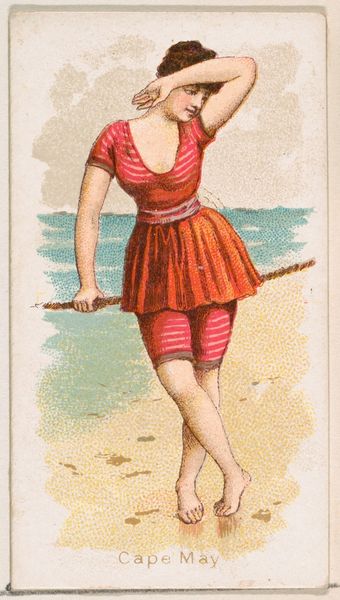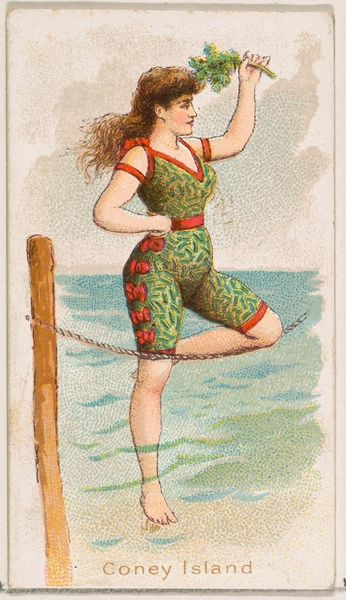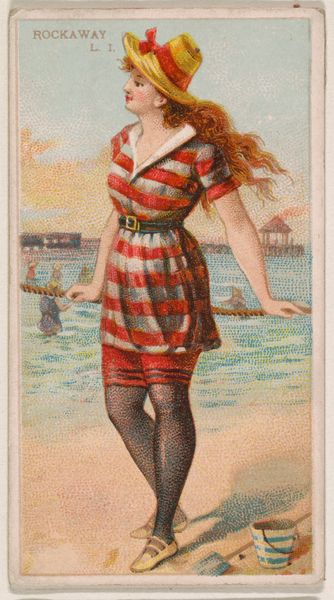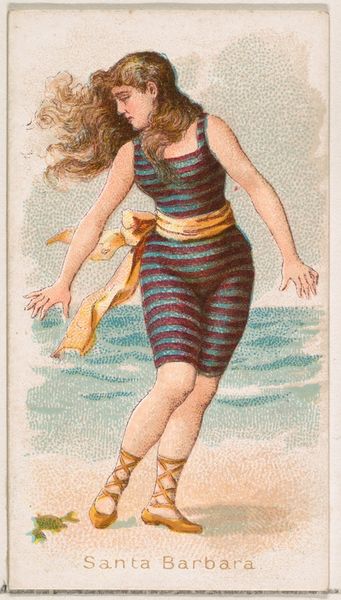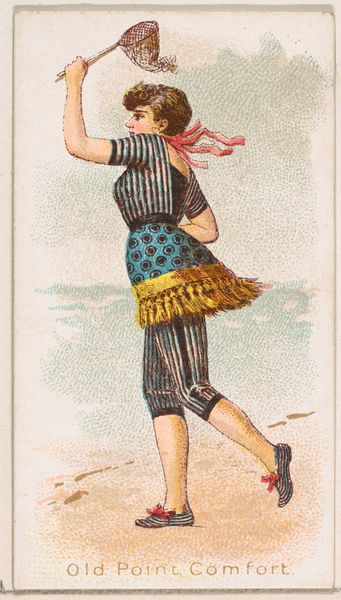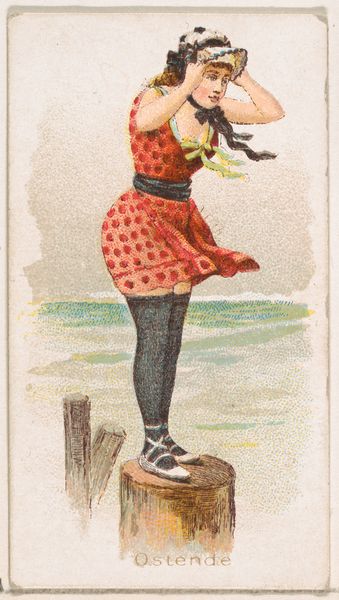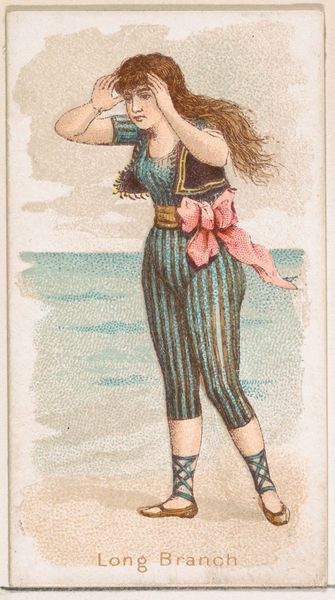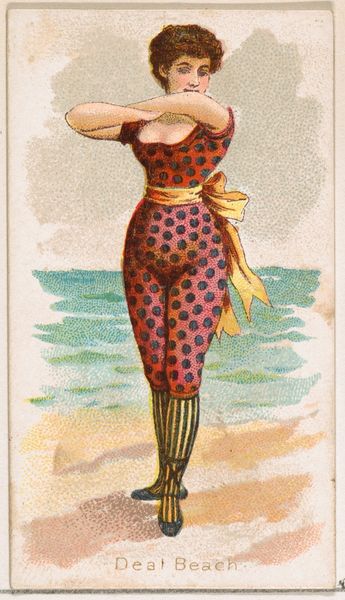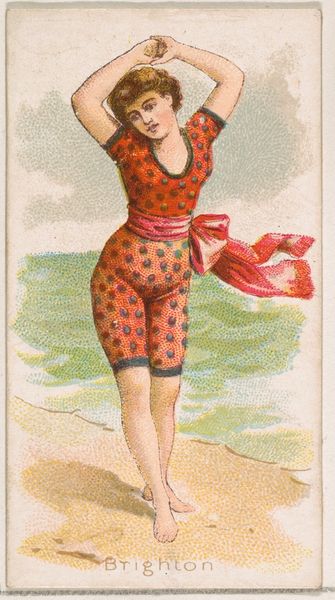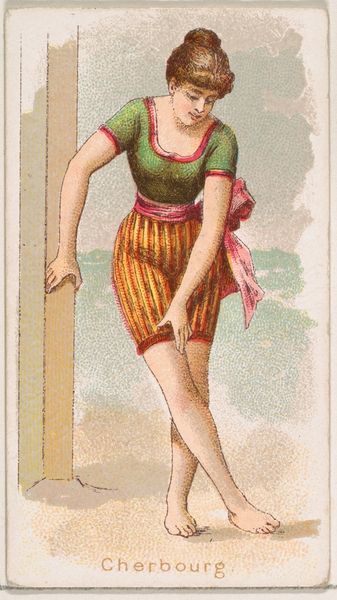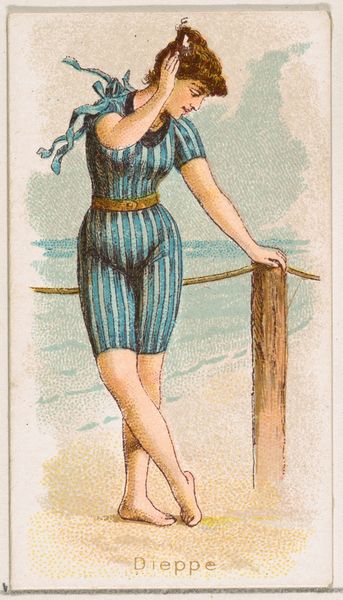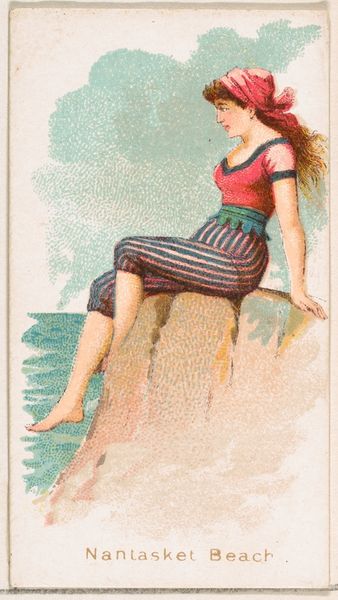
Rotheneuf, from the Fancy Bathers series (N187) issued by Wm. S. Kimball & Co. 1889
0:00
0:00
drawing, coloured-pencil, print, gouache, watercolor
#
portrait
#
gouache
#
drawing
#
coloured-pencil
#
water colours
# print
#
gouache
#
figuration
#
watercolor
#
coloured pencil
#
genre-painting
#
erotic-art
Dimensions: Sheet: 2 11/16 × 1 1/2 in. (6.9 × 3.8 cm)
Copyright: Public Domain
Curator: This image is titled "Rotheneuf, from the Fancy Bathers series," printed by Wm. S. Kimball & Co. in 1889. It's a charming piece, now residing here at the Metropolitan Museum of Art. What strikes you initially? Editor: My first thought is how staged and unnatural it feels. It’s bright, colorful, and clearly meant to be playful, but the woman's pose seems so constructed, almost performative. Curator: Precisely. It's a print, most likely intended for advertising or collecting, revealing much about late 19th-century ideals. We see her presented as carefree and attractive but also confined within the expectations of feminine presentation at that time. Consider those laced shoes! Hardly practical for a swim. Editor: Right, the impracticality is key. Those clothes and her perfect hair and makeup undermine the idea of actually enjoying the water. It's a performance of leisure and beauty, carefully curated for a male gaze. Is this beach for her pleasure or someone else's? The gaze feels so potent. Curator: A fascinating point. Kimball was, after all, a tobacco company, and these images were often included in cigarette packs. This brings up questions about the commercialization of leisure and the female body. It reflects both burgeoning ideas around recreation and deeply entrenched objectification. Editor: It certainly speaks to a time of shifting social mores, a tension between increased freedom for women and the limitations still imposed on them. The "fancy" aspect is really doing a lot of work. Fancy here means "artificial", in the way commodities are. Curator: It's important to understand these images as not merely depictions of women but as artifacts embedded within a specific economic and social context. Kimball was profiting from a romanticized vision of femininity designed to sell tobacco products. Editor: So, looking at it now, we have to acknowledge that pleasure might only extend to the men buying these images. Where might a working-class woman see herself here? The politics are very apparent if you look past the color and lightness. Curator: Absolutely. Looking beyond the immediate visual appeal allows us to decode its underlying social messages and acknowledge who this fantasy truly serves. Editor: Seeing it like that makes me think we’re looking at how commodity production exploits identity. A history you can literally collect if you smoke enough cigarettes. Curator: A sharp insight, it shows the depth that unfolds when we consider the piece in its full historical setting. Editor: It makes you wonder what those consumers at the time made of all this… and what has or hasn’t changed between their consumption of women’s bodies, and now.
Comments
No comments
Be the first to comment and join the conversation on the ultimate creative platform.

